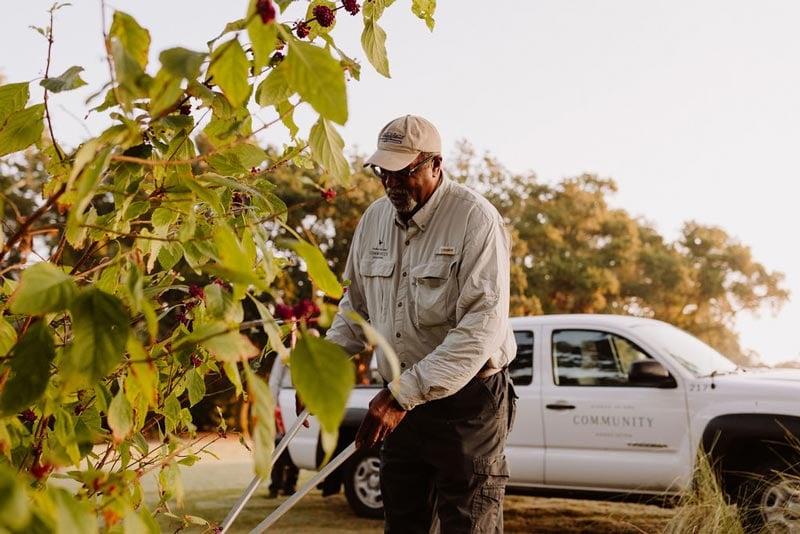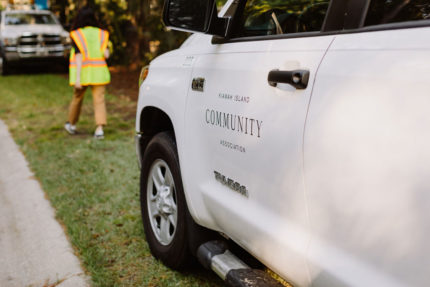Sep
25
2007
From The Blog
Evolution Of Family Recreation Catering To An Expanding Community
Over three decades ago, Kiawah opened as a golf and tennis resort which was complemented by a planned residential community. At this time, some recreation programs beyond golf and tennis were quickly put in place. Kamp Kiawah and a small assortment of activities such as biking, teen and evening programs, as well as special events, were geared towards vacationers, but they’re also open to association members. Fairly soon, the need for programs and facilities exclusively for members became apparent. This need was met in several ways. First, Property Owner Parties (POPs) began as a dining club in the late ‘70s. Second, a swimming pool and small snack bar, dubbed the Pool Shack, or the property owners’ pool, opened for members in 1984,
Finally, shortly after the Landmark Land Company purchased the resort amenities in 1989, they began offering a Sports Card membership to provide association members access to these amenities. Today, the Pool Shack is known as the Sandcastle and offers a multitude of activities to all members, POPs is a major social organization with 300 members and nine special interest clubs under its umbrella, and the Sports Card has become the Governors Club, with its own clubhouse lounge, social events and dining options.
Some popular programs run by the resort in the early days have disappeared as a plethora of new groups and programs appeared. Few association members today witnessed any of the horse races on the beach, replete with mint juleps and viewed from bleachers constructed for the event. Former Resort Recreation Director Dylan Jones once staged Madrigal Dinners in the Brigantine room of the Kiawah Island Inn at West Beach. “We served an elaborate dinner,” he recalls, “with a roasted pig brought out on a stretcher. We would find people on Johns Island to bring their Irish wolfhound or their miniature donkey and parade the animals through the room to present to the king and queen.” Other events have survived and even grown and some are no longer run strictly by the resort. Symphony performances, holiday fun races on the beach, a traditional Christmas tree lighting ceremony and the Kiawah marathon are among many popular events today that began in the ‘70s or early ‘80s. The marathon reached its current stature in 1995 when it caught the attention of Runners World. Thereafter, a cap of 4,000 participants became necessary for logistical reasons, but the race remained unique in that the time maximum was eight hours, rather than the usual six, in order to allow walkers, such as the leukemia association, to compete.
POPs: Parties and Clubs
Tom and Dixie Cowen, POPs membership chairs, have owned property on Kiawah for more than 30 years. Tom remembers that at first, Kiawah had few residents, no social facilities and, with the Kiawah Island Inn not yet “in full swing,” no places to dine outside of private homes. POPs began as a loose collection of 15 or 20 Kiawah couples who met, usually in small groups, for dinner parties. Today, one of POPs’ clubs is the dinner club, which arranges Saturday night dinners in groups of eight people in members homes about five times a year.
Over the first decade, Tom recalls, POPs grew gradually, added an occasional social outing and eventually institutionalized some social events, such as the Christmas dinner. POPs now has four major themed parties each year, generally in October, December, March and May, with the December party scheduled in cooperation with the resort’s Christmas tree lighting and music ceremony. Early POPs members made an effort to contact new island residents, both full and part time, and welcome them into the social life of Kiawah. The Newcomers Club now handles that function. Beginning in the fall of 2006, POPs and KICA began co-hosting an event where new members can learn more about POPs, the association and other island
activities, while also meeting other members. In the early years, new POPs members might number only three or four, but today 20 new members are likely to attend.
Most of the nine POPs clubs were not started by POPs. Rather, they developed independently, and later came under the POPs umbrella. Now, they rely on POPs for joint publicity, access to the POPs membership list or for additional support. Membership in each umbrella club is open to all association members (full-time and part-time) on geographical Kiawah Island, though guests are welcome at most activities. For information on the nine POPs clubs, see the article on page 6.
Alternatives
One of the largest of the previously independent umbrella clubs is the Alternatives club. Aggie Ingersoll reminisces about the day in 1991 that she and six other women, who were not golf players, gathered in her kitchen to plan a social club for themselves. Her husband, Bob, remembers coming into the kitchen and the women asking him to recommend a name for their group. Since the group was forming to offer women an alternative to golf and tennis, he proposed Alternatives, and the club was born. At first, the women only wanted to have lunch together. After a few additional meetings, several other women joined them and suggested they expand to more activities than lunch. Eventually, the group decided on a tripartite focus of social, philanthropic and educational activities. Aggie recalls an early trip to Myrtle Beach to visit Brookgreen Gardens, a tour of the old churches of Charleston, and a gang of women, many of whom had never held
a paintbrush, painting a Habitat for Humanity home.
In less than five years, Alternatives had ballooned to about 250 members. The club began to have speakers, and members wanted to include guests from outside of Kiawah. Eventually, the women decided they should become a POPs club. Their meetings were the same Wednesday of each month, and part-time residents would plan their visits to Kiawah for those days. Some past and ongoing activities include a variety of speakers, singers, support of Ronald McDonald house, outings; a Christmas cookie delivery to a local school, Kiawah firefighters and local security personnel; and an annual fashion show at the River Course clubhouse.
From Shack, To Recreation Center, To Community Center
Ten years after the association’s swimming pool opened, the Pool Shack snack bar had closed. This closure was due to the pool being too small for the expanding association membership, and members wanting additional recreational facilities. In response, the Sandcastle recreation center opened in May, 1996, and a 10-year growth spurt of association programming for members ensued.
Current Recreation Department Director Kay Narmour joined a skeleton staff as a part-time employee in 1997 and has watched the staff grow and the organizational structure change as the association divided into separate departments, and recreation took over the operation of Rhett’s Bluff and the Cinder Creek pavilion. She has overseen the transition of the Sandcastle from a recreation center to a community center, and the expansion of programming to include social, educational and wellness programs such as health and nutrition as well as fitness, swimming and paddling. Members can consult the calendar in each issue of the Digest for a full list of programs, or visit the association Web site at http://www.kiawah-owners.org.
One of the challenges faced by Kay was a lack of space for fitness activities. In recent years, she shifted equipment, erected walls and converted storage spaces to cope with growing needs. With the
recent opening of the remodeled first floor of the Sandcastle, Kay has realized her goal of expanding the fitness equipment and finding separate classroom space. An ongoing challenge is the need for programming for the two distinct groups that the community center serves: vacationing summer members and their children, and year-round residents, few of whom have children at home. For the former, after attempts such as youth yoga classes and a sizeable investment in an art program generated low participation, Kay has learned that, during summer, children need a break from structure and “they just want to play.” Drop-in activities on the pavilion and in the pool, and holiday activities became popular, and resort programs met the needs of most member families for other organized activities. The latter group enjoys social and cultural programs such as Opera Light, Kiawah Reads and the monthly Thursday night dinners. Fitness activities are important to both groups. The fitness facilities are in high demand, and the unheated pool is in use all year. During the winter, some members even swim in wet suits.
In the future, Kay envisions a Sandcastle facility serving as a community gathering place for the arts, with a multitude of programs and activities to serve a population that tends to be well educated and “tuned in” to culture. During her tenure, Kay has noticed a demographic shift in the people she sees most at the Sandcastle. Some of the older, year-round members have moved away to be closer to family or to health care facilities, or have passed away, and many have been replaced by part-time families for whom Kiawah is a second, or third home.
Governors Club
Since Kiawah’s inception, golf and, to a lesser extent, tennis, has fueled the desire of many people to own land on Kiawah. One of the first actions by Landmark after its purchase of the Kiawah resort in 1989 was to offer a “Sports Card” membership to all association members, providing virtually unlimited access to golf and tennis, as well as additional benefits such as the use of Night Heron pool. Before the Kiawah Island Club opened the River Course and later, Cassique, the Sports Card was the only option for an all-inclusive sports program, and a large majority of all year-round residents joined.
In 1993, Virginia Investment Trust (VIT) purchased the Kiawah resort in the wake of Landmark’s bankruptcy, and they immediately formed the Governors Club to replace the Sports Card membership. When they constructed the Osprey Point clubhouse a couple of years later, they dubbed it the Governors Club headquarters and included a club lounge.
Many Governors Club members chose not to join the Kiawah Island Club because the Governors Club filled their golf, tennis, social and dining needs, at a much lower cost. The club flourished under the leadership of VIT’s Bill Goodwin and continued to expand when the Turtle Point clubhouse opened about five years ago. Today, the Governors Club provides many association members with access to most resort amenities through multi-tiered membership options, and is an important part of their island life.
For information on a Governors Club membership, please visit them on the Web at http://www.kiawahgovclub.com/. This concludes our three-part series on the evolution of the current family and recreational programs on Kiawah. We welcome members’ suggestions for further articles of historical interest. You can e-mail suggestions to Doug Reynolds, association communications coordinator, at [email protected]

